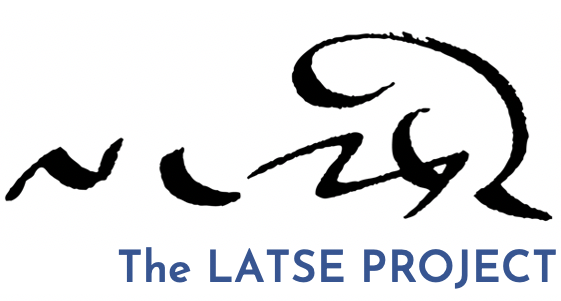GENDUN CHOPEL CENTENNIAL CONFERENCE: Irmgard Mengele
In 1996, I presented my masters thesis at the University of Hamburg. In 1999, it was published by the Library of Tibetan Works and Archives in Dharamsala. My professor, David Jackson at the University of Hamburg, had given me the most interesting and fascinating topic: the life and works of Gendun Chopel. At his suggestion, I translated the biography composed by Sherab Gyatso (Shes rab rgya mtsho, 1905–1975), a close friend and student of Gendun Chopel during the last years of the latter’s life. Sherab Gyatso wrote this biography in 1972 at the request of Khetsun Zangpo (Mkhas btsun bzang po) Rinpoche. During a personal conversation with Khetsun Zangpo in Kathmandu in January 1995, I learned that he [Khetsun Zangpo] was not personally acquainted with Sherab Gyatso but had come to know about Sherab Gyatso’s being a student of Gendun Chopel. In 1973, the biography was first published in The Biographical Dictionary of Tibet and Tibetan Buddhism, released in Dharamsala. Two other versions of the same work were published later. My book contains an edited version of the 1973 biography in Tibetan and an English translation of the text. In chapter 4, I compiled an updated list of Gendun Chopel’s compositions, comprising published works, as well as attributed and unpublished works, based on Heather Stoddard’s annotated bibliography (Stoddard 1985: 327–336, Mengele 1999: 77–113).
Since six years have already passed, this list needs to be updated again. Most of my research was conducted in Dharamsala, where I was kindly supported by the Library of Tibetan Works and Archives. I am still grateful to Mr. Lobsang Shastri, Mr. Pema Yeshe, and Mr. Tashi Tsering, who all gave me great support. Likewise, I am deeply indebted to Mr. Tashi Dhondup, who was, and still is, my language teacher. In 1998, I stopped my research on Gendun Chopel in order to concentrate on the topic of my PhD dissertation: the life of the tenth Karmapa Chöying Dorje (Chos dbyings rdo rje [1604–1674]), which I shall present at the University of Hamburg next year.
I want to finish this short introduction with a few lines of my translation:
In the Water-Horse Year [1942], when I went to India on pilgrimage, I [Shes rab rgya mtsho] saw one travel account of India in Sārnāth which said that [it was] written by a person from Amdo called Gendun Chopel. Up to that moment, [I] hadn’t even heard the name. Being very fascinated [by the travel account], [I] wondered if [I] could meet that [person] once. Though [I] investigated everywhere, [I] couldn’t find [him].
After that, a few years later, [I] heard that [Gendun Chopel] had arrived in Lhasa. [I] immediately went and met [him] at Gomang Khangsar (sGo-mang-khang-gsar) where [he] was staying…. [I] had been thinking that because [Gendun Chopel] was someone who had come to Tibet after staying in India for many years, [he] might be wealthy, dignified, and elegant. But [he] wasn’t like that. [He had a] face appearing slightly discouraged, very white enamel on two [of his] incisors, a charming smile [and] was wearing a chuba (phyu pa) [Tibetan layman dress] of brown cotton-cloth. [Gendun Chopel] had no other things than a big black metal box, one [kerosene] stove [for cooking], one small aluminum pot, and something resembling a blanket.
From then on, by gradually becoming acquainted [with each other], [we] became very devoted friends; I couldn’t do without him, and he couldn’t do without me. The black box was [filled with] books alone. [He] didn’t use to show it to anyone else, except me. [Gendun Chopel] used to say, “You look at all these. Ask if [you] have something to ask; [it] may make some small difference [in your opinion].” (Mengele 1999: 61–62)
